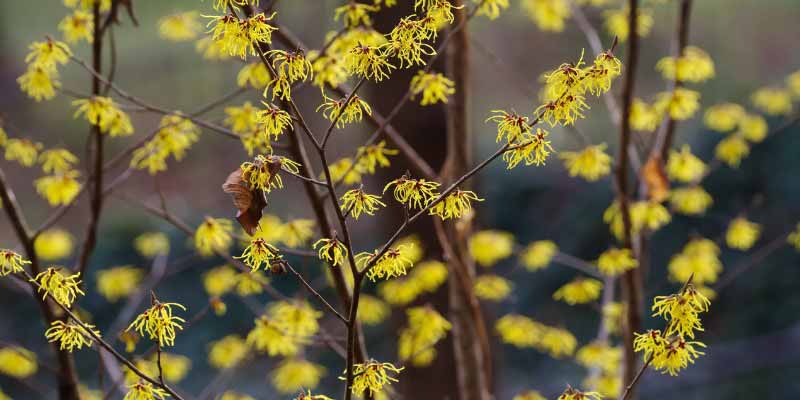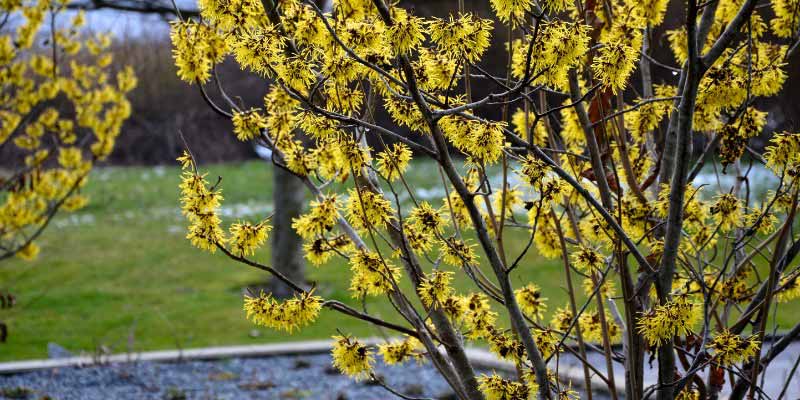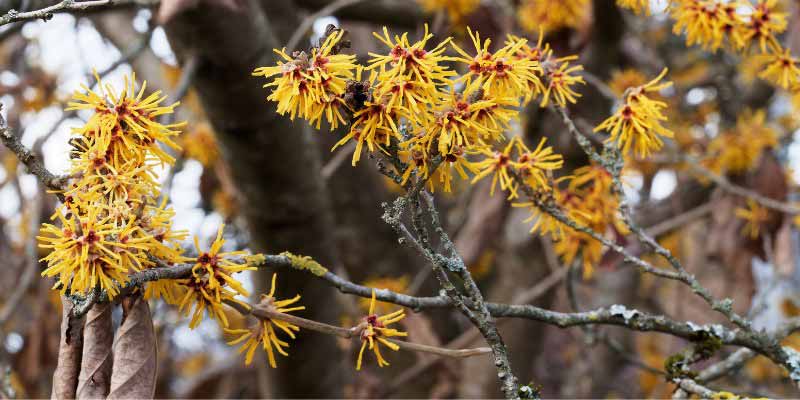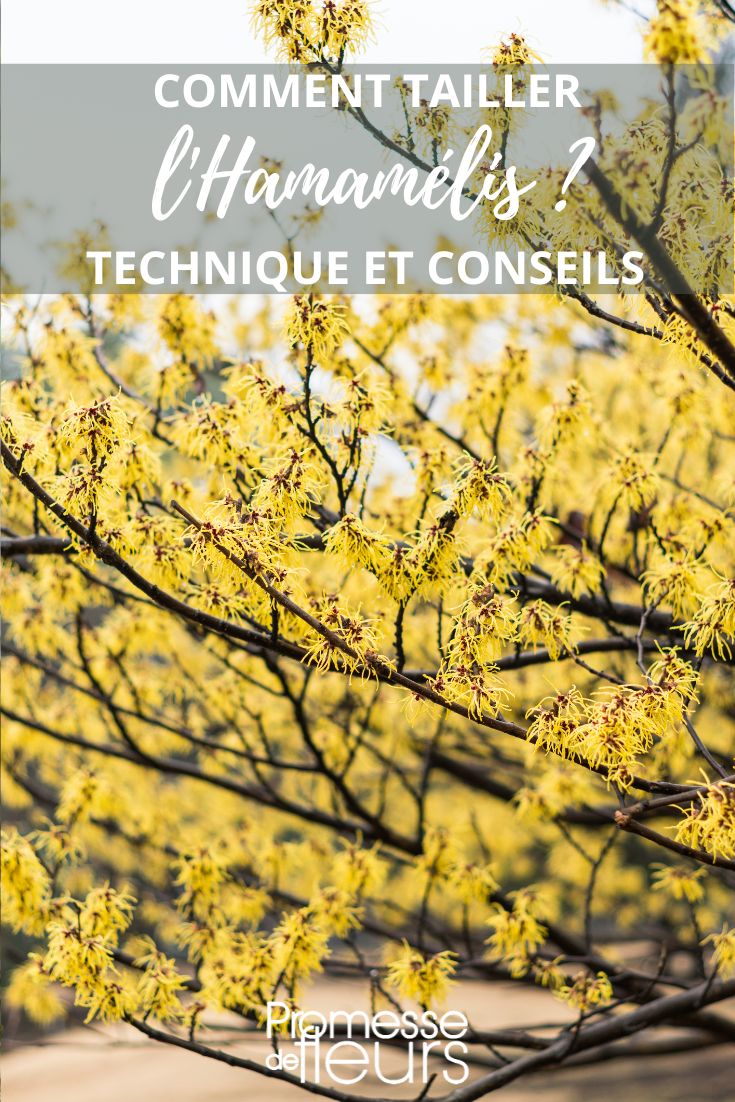Hamamelis, also nicknamed "witch-hazel", is a bush prized for its spectacular, scented winter flowering resembling golden-yellow, orange or red spiders, and for its striking autumnal foliage. This slow-growth bush requires little maintenance. At ripeness it will not exceed 4–5 metres in spread or height. However, although not essential, light pruning may be necessary to maintain a harmonious shape over the years. Discover our tips for pruning Hamamelis well!
Why pruning Hamamelis?
Hamamelis, due to its slow growth and naturally elegant habit, does not require severe pruning. Its upright, often rounded habit can spread as much in width as in height, reaching about 4 to 5 metres at ripeness. However, over the years, Hamamelis can develop some asymmetry, with branches that unbalance its harmonious habit. Light, regular pruning then becomes useful to preserve its aesthetic appearance.
Pruning primarily helps maintain a balanced, harmonious silhouette. Without pruning, the bush can become too dense, preventing good light penetration into the branches. By removing superfluous branches or those crossing other shoots, you improve air circulation, thereby limiting the risk of fungal diseases often caused by excessive humidity in overly dense foliage. This better ventilation also benefits flowers and foliage, which will gain in brightness and vigour.
With age, Hamamelis tends to spread disorderly, which can detract from its natural beauty. Maintenance pruning therefore restores a clear structure to the bush. Removing dead or diseased branches also strengthens Hamamelis’s health, allowing it to focus on producing robust new shoots.
Another advantage of pruning is that it channels the bush’s energy towards floral buds, stimulating flower production. By pruning just after flowering, you encourage Hamamelis to regenerate and produce a new flowering the following year, avoiding the plant wasting energy maintaining unnecessary or poorly positioned shoots.

When to prune Hamamelis?
Pruning of Hamamelis should be carried out just after flowering, which occurs in late winter or early spring depending on variety. Witch-hazel flowers on wood at least one year old. This timing allows the bush to regenerate before the growing season. Avoid pruning in autumn or mid-winter, as this could compromise the next flowering.
How often to prune?
Pruning should remain occasional, about every two years, to give the bush time to regenerate between interventions. Pruning that is too severe or too frequent can delay flowering or slow growth the following year. Younger specimens require less pruning than mature bushes, and too frequent pruning weakens the bush. More compact varieties may also need less pruning than others.
Necessary equipment
- pruning shears
- Possibly, hedge shear for larger branches
- wound-sealing putty

How to prune Hamamelis step by step?
Pruning simply involves balancing the shoots so your bush keeps a regular, balanced shape.
- Use a clean, sharp pruning shear to avoid damaging branches.
- Before starting, observe Hamamelis’s natural shape and identify branches that unbalance its silhouette.
- Begin by removing dead, damaged or diseased branches that can harm the bush’s health.
- Prune shoots that protrude or cross other branches, cutting just above a bud oriented outwards. This encourages a better distribution of branches and improves light penetration.
- Do not remove more than one third of the total length of branches so as not to weaken the bush.
- After pruning, step back to check the overall shape of Hamamelis. It should be harmonious, with well-distributed branches. If you notice imbalances, you can refine the pruning slightly.
What to do after pruning Hamamelis?
After pruning, a good mulch at the base of the bush is recommended to retain moisture and protect roots. Adding some compost or organic fertiliser in spring will also help Hamamelis regenerate after pruning and prepare its flowering for the following year. You can also apply wound-sealing putty to wounds on larger branches immediately after pruning.

Further reading
- For everything about Hamamelis, see our complete guide: Hamamelis, planting, cultivation, maintenance and association
































Comments